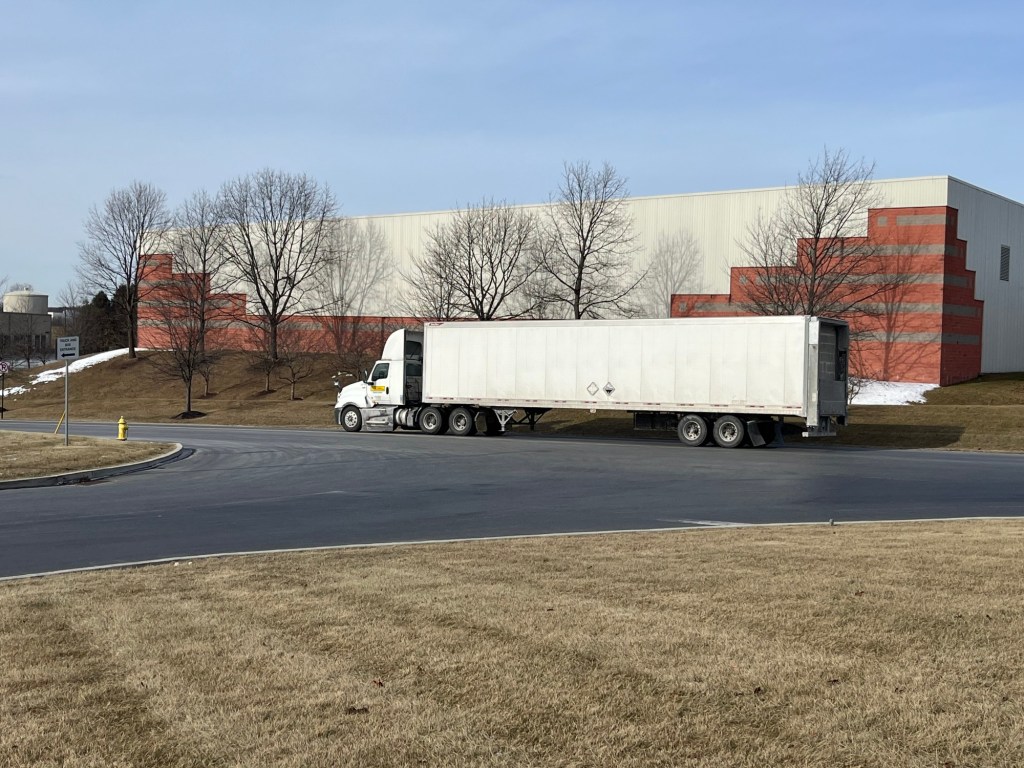Is the Lehigh Valley’s industrial building market going a different direction from its peers in central and northeastern Pennsylvania?
Third-quarter figures from commercial real estate company CBRE showed that the Valley had a negative net absorption number for both the quarter and the year so far. A market has negative net absorption when the square footage of vacated spaces exceeds the square footage of new leases. This results in an increase in the total vacant space available.
For the quarter that ended Sept. 30, CBRE said the Lehigh Valley had a vacancy rate of 11%. Industrial buildings, which include warehouses, had a net absorption rate of negative 2.2 million. For the first nine months, the Valley’s rate was negative 3 million.
For statistical purposes, CBRE rolls the Lehigh Valley into what it calls the I-78/I-81 Corridor along with the eastern part of the state outside of the Philadelphia area. Looking at the big picture, other areas are seeing a lot more development. While the Valley had about 625,000 square feet in the construction pipeline, places such as Hazleton had 4 million and the Harrisburg/York area had 2 million.
The Lehigh Valley Planning Commission has reviewed about 2 million square feet of warehouse projects through September. A year ago, it was 7.3 million square feet.
Joe Gibson, director of research for Eastern Pennsylvania for CBRE, said the Valley is simply caught in the down part of a cycle. With more available space elsewhere, some companies are moving to newer or better locations or downsizing multiple facilities.
“It’s a little bit of timing and performance,” Gibson said. “The Lehigh Valley has been one of the most sought after logistics sub markets in the PA corridor for quite some time. We have flight to quality going on across the entire corridor and then we have a little bit of right sizing. During the pandemic era, and during that boom time, there was very limited supply. So if you were a tenant that needed X square feet, but your only option was X plus Y square feet, you took it because you needed to go somewhere.”
Gibson added that the negative absorption in the Valley was a handful of tenants putting spaces up for sublease at the same time. “It wasn’t a mass exodus,” he said.
“We’re moving through those stages,” Gibson said. “Like every other industry, it goes in cycles. We saw a tremendous amount of demand that moved us into a tremendous amount of development, and then economic conditions changed. The market only really posted a little bit of occupancy loss, where every other year has industrial logistics growth.”
Gibson pointed out that the current numbers are only a snapshot in time.
“Once demand and everything stabilizes, the Lehigh Valley will be again at the forefront,” he said. “It’s a desirable place to be given its location, proximity to ports, proximity to infrastructure and proximity to rail.”
Vacancy rates in the rest of the corridor ranged from 4.6% in Lancaster to 15.1% in Hazleton, with an average of 8.3%. The Chambersburg area along Interstate 81 had the quarter’s highest absorption rate with a single transaction: Ryder Logistics leasing a 1 million-square-foot warehouse.
Gibson’s report, though, noted that more tenants are demanding smaller buildings that range between 100,000 and 250,000 square feet.
The average rent per square foot in the Lehigh Valley was about $11.66, up slightly from $11.29 at the end of 2024. That average in northern and central New Jersey during the third quarter was $19.59.
Real estate management firm Jones Lang Lasalle said leasing volume declined to 5.7 million square feet in the first quarter for its Eastern & Central Pennsylvania region, which includes the Lehigh Valley. It’s well below the two-year average of 8.7 million square feet.
Leasing activity slowed in the quarter, “with new deals and overall volume trailing recent averages,” JLL said. “Tenant demand showed signs of stabilizing as more requirements (such as costs) entered the market.”
JLL added that reduced uncertainty on tariffs and lower interest rates could bring an uptick in tenant demand.
Morning Call reporter Evan Jones can be reached at ejones@mcall.com.

